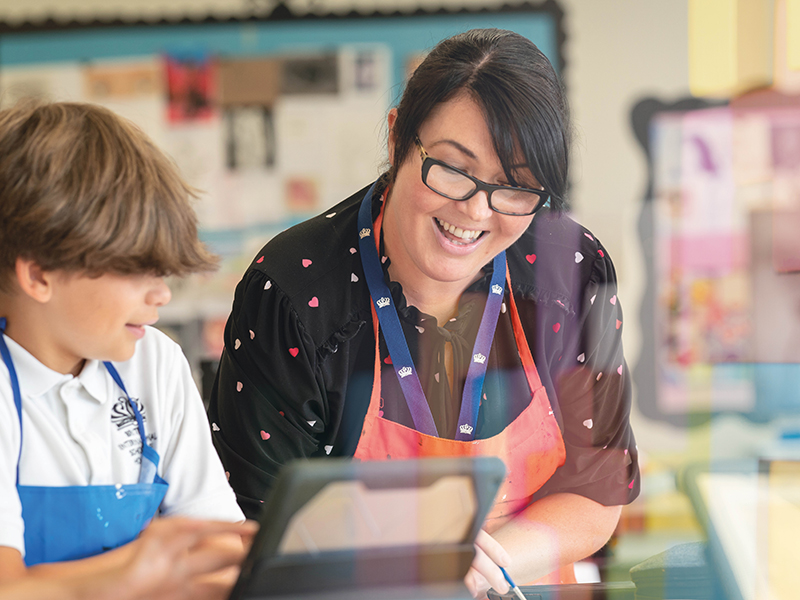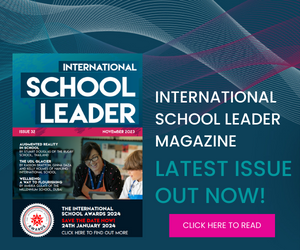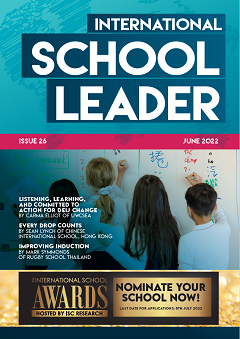By Audrey McLean
When you think of innovation and creativity in learning, you might be forgiven for picturing something high-tech, cutting-edge and expensive: something beyond the reach of many schools; something perhaps attributed to the mantle of the computer science expert.
At the British International School of Houston (BIS Houston), our innovation came from adding value through connections – connections across disciplines, connections across our global family of Nord Anglia schools and connections across age groups and phases of our K-12 programme.
Our innovative approach hinged on the strategy that any cross-curricular link is better than no cross-curricular link, and the broader the reach, the more connections the students could make. It reinvigorated well-deserved respect toward the visual arts, highlighting the powerful effect of hand-rendering an artistic image on the successful demonstration of learning.
“Our innovative approach hinged on the strategy that any cross-curricular link is better than no cross-curricular link, and the broader the reach, the more connections the students could make.”
Our examples included interdisciplinary English and art lessons, where the opening scene of Shakespeare’s The Tempest was painted in vivid, stormy colours, with lightning and tumultuous waves. This had a significant impact on the students’ ability to not only describe Act 1, Scene 1 with absolute clarity, but also artistically create other aspects of the play such as Caliban’s cave and Prospero’s library.
In crafting this interdisciplinary approach, it became obvious that this innovative method didn’t require any extra work on the teachers’ part because so many of the things we already teach have obvious connections to other disciplines.
In keeping with an ‘extreme weather’ theme, we linked our artwork with learning in humanities by asking, ‘Where is the riskiest place to live in the USA?’. This learning was bolstered by our computer science department, who coded interactive artwork that recreated the flashes, sounds and movement of events such as tornadoes, hurricanes and snowstorms.
The theme of extreme weather in and of itself was not the catalyst for the success of this initiative; it was the willingness and communication skills of the collegiate body to forge interdisciplinary links wherever they worked. Any interdisciplinary link is better than no interdisciplinary link.
In drawing from the creative arts as a stimulus, we were challenging the preconceived idea that creativity is of lesser importance than the big three: English, maths and science. The idea that creativity isn’t important learning couldn’t be further from the truth, especially with the proliferation of AI. Creativity is the one true individual expression of originality without the fear of being wrong. There is no such thing as ‘wrong’ in art, and yet we still have students who tell us that not only are they scared to fail at art, they are actively encouraged by their parents to prioritise other learning over art. As a result, the failure to value artistic creativity not only deprives the student of that rich, tactile, interdisciplinary interaction, it also deprives the world of would-be innovators and creators.
A real win for this initiative came from challenging this stereotypical view of art, igniting a renewed respect from both students and colleagues. Too many times we hear comments, even from highly skilled and respected teachers, such as “It’s only art” or “Let’s not plan any more than one session per week on artistic/creative learning”. This is, unfortunately, the default attitude across education, and a major reason why we purposefully chose art and design as the one common denominator throughout our cross-phase, interdisciplinary initiative. We saw our students accurately illustrating rope, cone or multi-vortex tornadoes, or collaborating with the art department to design and model a fictitious island that harnessed the weather as a means to produce sustainable energy.
The success of this initiative was down to the open-minded, risk-taking approach we took, which forged meaningful, cross-curricular links across subjects and phases, enabling the learning to not only come alive, but to allow for a deeper understanding of multiple viewpoints.
This approach is nothing new to education, and many of us recall with fondness our class topics from our youth – you may even recall creating your own topic book, hand-stitched together down the spine. However, overarching topics are harder to implement when students transition from a primary school environment with only a handful of teachers to a setting where multiple teachers are facilitating their subject in complete isolation.
The solution to branching into a truly interdisciplinary approach is not without a good deal of ground work:
- Have a very simplified version of your whole school curriculum available to all stakeholders. At BIS Houston, for instance, we use Atlas Rubicon for this purpose.
- Have ‘interdisciplinary champions’ for each year group who are given the time, ahead of each new academic year, to look over the curriculum offering for their particular year group with the sole purpose of finding existing curriculum links across subjects.
- Try to brand the links with a dynamic title – something that will peak the students’ interest. For example, at BIS Houston our topic titles have included ‘Extreme Weather’, ‘Life’ and ‘Build Better’.
- Have your interdisciplinary champions collaborate to find cross-phase links. These are invaluable for empowering our learners to rise to the mantle of the expert by becoming the teacher themselves whilst sharing pertinent and highly contextualised knowledge and skills to their younger counterparts, and vice versa.
- Don’t feel pressured to shoehorn every subject and curriculum offering into an interdisciplinary approach. Even combining two subjects will create a synergy between the learning, allowing for much deeper connections to the learning.
- The links don’t always need to be solely curriculum based. At BIS Houston, we have had great success with linking our learning through the UN Sustainable Development Goals.
- Finally, reassure staff that this will not be an enormous paradigm shift. They will still teach in their familiar environment, using the guidelines and objectives that they are accustomed to. They will just need to highlight those golden moments when the learning that is taking place within those four walls (or wherever they may happen to be) has applications far beyond the confines of that space, time and subject.

Audrey McLean is a STEAM and Visual Arts & Design Thinking teacher at BIS Houston, and Art Consultant Specialist for Nord Anglia Education’s Global Campus – the group’s online learning platform. You can connect with Audrey on LinkedIn or through the school’s website.





